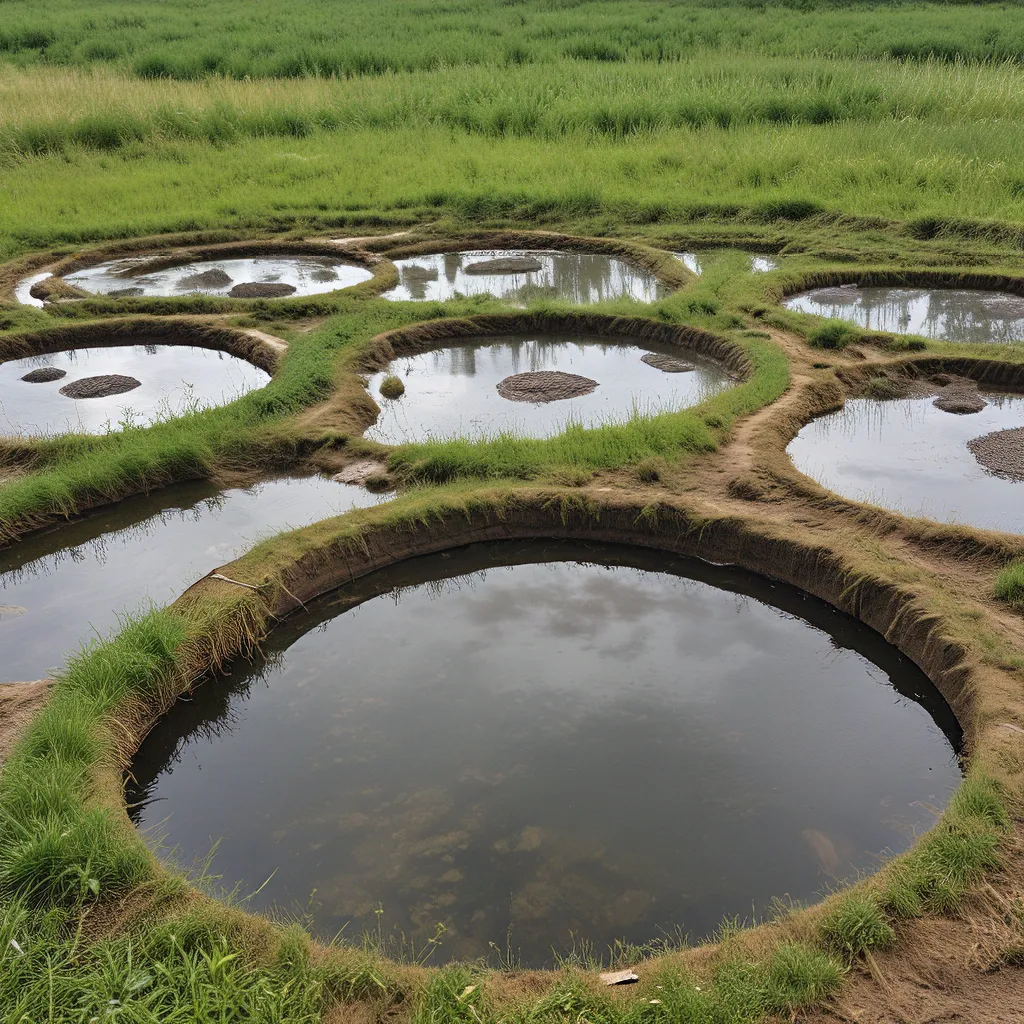
The Untapped Potential of Wastewater
As I stare out the window of my office, I can’t help but wonder about the vast potential that lies in the very water we often take for granted. You see, wastewater – that murky mixture of used water, household and industrial effluents, and all manner of dissolved and suspended solids – is not just a byproduct to be disposed of. It’s a veritable treasure trove of renewable resources waiting to be unlocked.
In this article, I’ll take you on a journey through the emerging field of circular bioeconomy, where wastewater is no longer seen as waste, but as a valuable feedstock for the production of bioproducts and bioenergy. Prepare to be amazed at the innovative ways we can transform our water challenges into sustainable solutions.
The Circular Bioeconomy: A Game-Changing Approach
The circular bioeconomy is a paradigm shift in how we view and manage our natural resources. Instead of the traditional linear “take-make-waste” model, the circular bioeconomy advocates for a closed-loop system where waste is minimized, and valuable materials are recovered and reused.
The US government has recognized the immense potential of this approach, stating that “the circular bioeconomy can help address climate change, expand the use of renewable resources, and create new economic opportunities.”
One of the most promising avenues within the circular bioeconomy is the valorization of organic waste streams, such as wastewater. By harnessing the embedded nutrients, energy, and other valuable compounds in wastewater, we can transform this resource into a wide range of bioproducts and bioenergy.
Wastewater: A Treasure Trove of Renewable Resources
When you really look at it, wastewater is far from just a waste product. It’s a complex mixture containing a wealth of organic matter, nutrients, and energy-rich compounds. These can be extracted and repurposed in a variety of ways, creating a truly sustainable and circular system.
According to recent research, wastewater can be a valuable source of biofuels, bioplastics, biochemicals, and even biofertilizers. The possibilities are truly endless, and the potential benefits are staggering.
Imagine a world where we could power our homes and businesses using renewable energy derived from wastewater. Or a future where the plastic products we use every day are made from the very water we’ve used and discarded. It’s a future that’s not only possible, but one that we’re actively working towards.
Unlocking the Potential: Technology and Innovation
To bring this vision of a circular bioeconomy to life, we need innovative technologies that can effectively extract and transform the valuable resources in wastewater. Fortunately, the field of wastewater treatment is rapidly evolving, with exciting breakthroughs happening all the time.
One particularly promising technology is anaerobic digestion, which uses microorganisms to break down organic matter in the absence of oxygen. This process not only removes pollutants from the water, but it also generates biogas that can be used to produce renewable energy.
Another innovative approach is the use of microalgae to capture and convert the nutrients in wastewater into valuable bioproducts, such as biofuels, bioplastics, and even animal feed.
These are just a few examples of the cutting-edge technologies being developed and refined to unlock the full potential of wastewater. And as research continues, I’m confident that we’ll see even more exciting advancements in the years to come.
Embracing the Future: The Circular Bioeconomy in Action
As you can probably tell, I’m deeply passionate about the potential of the circular bioeconomy and the role that wastewater can play in this transformative shift. And I’m not alone – companies, researchers, and policymakers around the world are all working to make this vision a reality.
One of the companies leading the charge is Alpha Wastewater, a pioneering firm that specializes in innovative wastewater treatment solutions. They’re at the forefront of developing integrated systems that can extract and repurpose the valuable resources in wastewater, creating a truly closed-loop system.
But the circular bioeconomy is not just about technology – it’s also about changing mindsets and fostering collaboration. We need to break down the silos that have traditionally separated different industries and sectors, and work together to create holistic, sustainable solutions.
The Future is Bright
As I sit here, gazing out at the world, I can’t help but feel a sense of optimism and excitement about the future of wastewater treatment and the circular bioeconomy. The potential is simply staggering, and I believe that with the right innovations, the right partnerships, and the right mindset, we can transform the way we think about and manage our water resources.
So, I encourage you to join me on this journey, to explore the possibilities, and to embrace the future of the circular bioeconomy. Because the water we use today doesn’t have to be waste – it can be a valuable resource that powers our homes, grows our food, and shapes our very future.
The future is bright, my friends. Let’s make the most of it.